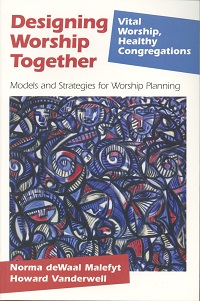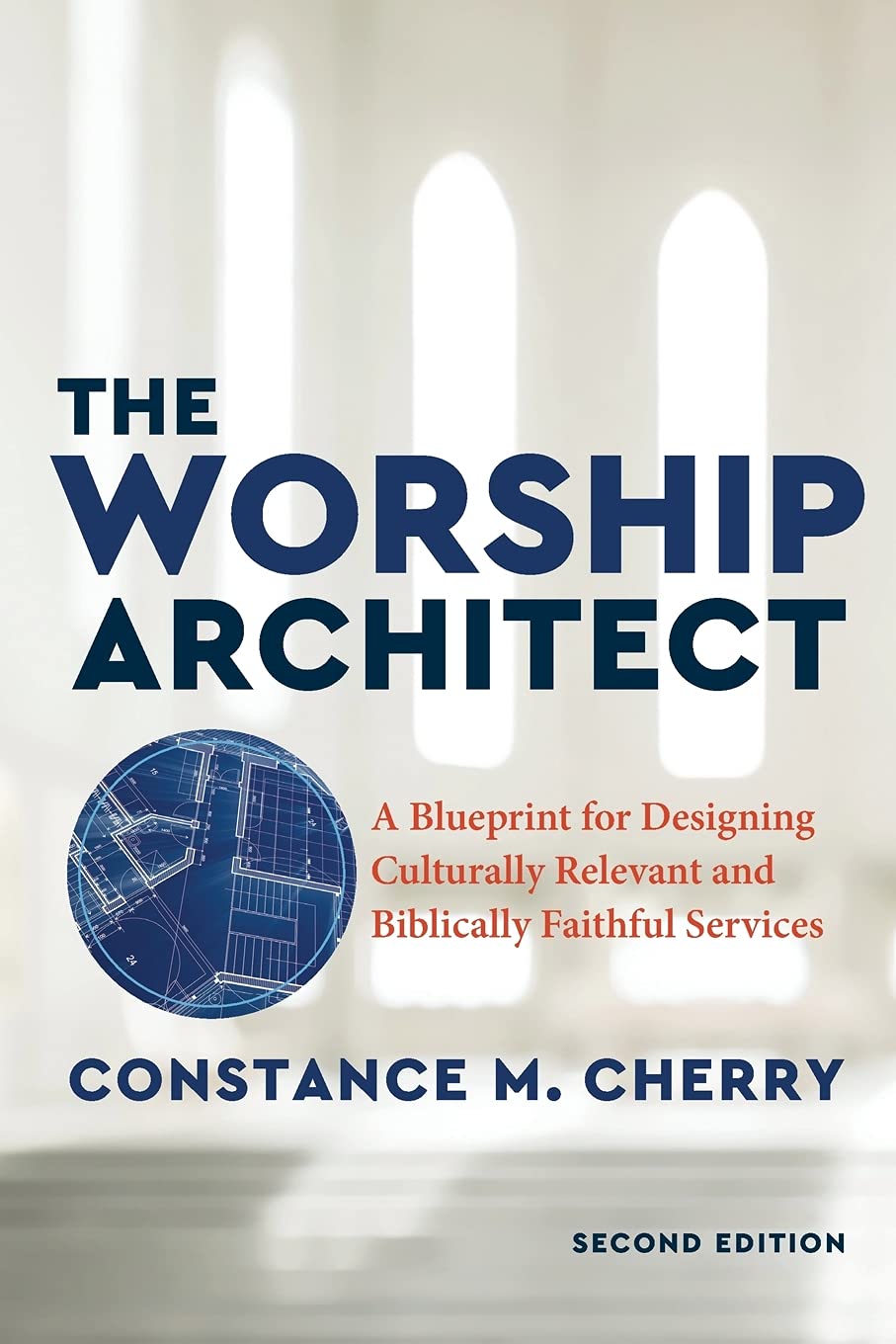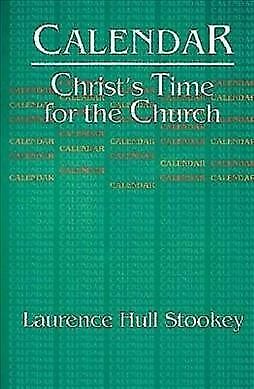When the subject of Planning Worship Series Ahead is raised, we are immediately faced with a number of major concerns and issues. Notice the progression of these ideas:
- Worship is vitally necessary.
- Vital worship must be planned.
- The best worship is planned ahead.
- The cycle of the Christian Year and the life of the congregation teach us to plan ahead in series.
- Since the Word preached is central in the life of the church, preaching needs to be planned ahead in series in order to shape and support the entire effort of worship planning.
Soon we have a bundle that is much larger than we originally anticipated, and our task as pastors and worship planners has become considerably more complicated. Yet a chain is never stronger than its weakest link. The goal is to keep all such issues bundled together, while providing insights and resources that will address each of those concerns and activities.
Several premises undergird these materials for worship planning in series:
- The theme of preaching/sermons should shape the theme of the worship service and therefore needs to be determined first.
- The structure and rhythm of the Christian year should shape the selection of the passages and themes of preaching/sermons.
- The needs within the life of the congregation will influence the series of services and sermons that are scheduled.
Key Insights
- Worship planned in series provides for a greater cumulative impact on the spiritual life of a congregation as a theme is continually reinforced.
- Worship services that are planned in series according to the Christian Year immerse the congregation consistently in the full doctrine and ministry of Christ in an annual cycle.
- Worship and preaching that is structured in series provide for a more thorough treatment of a subject or theme. Each week can build on the previous week and take the subject further.
- Worship planned in series provides continuity for worshipers. They will remember the previous week and can anticipate the coming week(s).
- Worship planned in series encourages more regular attendance at worship and communicates the awareness that each week is linked to other weeks.
- Planning in series provides for more efficiency in preparation. The preacher can live into and research a subject/passage for multiple weeks; worship planners can anticipate coming weeks and collect materials for planning in anticipation.
- Planning in series requires careful advanced scheduling. All participants must be aware of future series so research can be done and resources can be collected.
Publications
 Designing Worship Together: Models and Strategies for Worship Planning (Alban Institute, 2005)
Designing Worship Together: Models and Strategies for Worship Planning (Alban Institute, 2005)
by Norma deWaal Malefyt and Howard Vanderwell.
This material comes from the experience of the authors in the pastorate where they were responsible for planning weekly worship. Collaborative worship is explained and encouraged. Guidance and tools are provided for the development of a worship calendar, both seasonal and weekly.
 The Worship Sourcebook, Second Edition (Calvin Institute of Christian Worship, Faith Alive Christian Resources, and Baker Books, 2013)
The Worship Sourcebook, Second Edition (Calvin Institute of Christian Worship, Faith Alive Christian Resources, and Baker Books, 2013)
This valuable resource for worship planners and pastors includes texts that can be read aloud as well as outlines that can be adapted for your situation. Teaching notes offer guidance for planning each element of the service. Thought-provoking perspectives on the meaning and purpose of worship are great for discussion and reflection.
 The Worship Architect: A Blueprint for Designing Culturally Relevant and Biblically Faithful Services
The Worship Architect: A Blueprint for Designing Culturally Relevant and Biblically Faithful Services
(Baker Academic, 2010)
by Constance Cherry
Cherry provides foundational guidance for planning teams who desire to move beyond thinking merely week-to-week in planning. She addresses the foundations for worship, the structure, and a variety of methods of encountering God in worship. Her perspectives are built on the desire to see the whole biblical narrative and encounter God throughout the entire Christian Year.
 Calendar: Christ’s Time for the Church (Abingdon Press, 1996)
Calendar: Christ’s Time for the Church (Abingdon Press, 1996)
by Laurence Hull Stookey
In a very clear and helpful description of the Christian Year, Stookey helps us to see how carefully planned worship becomes a series of encounters in which time and eternity intersect. He not only explains the basics behind the Christian Year, but also carefully explains the content of the major seasons.
Description.
The New Handbook of the Christian Year (Abingdon Press, 1992)
by Hoyt L. Hickman, Don E. Saliers, Laurence Hull Stookey, and James F. White.
This spiral-bound book is a library of the Christian Year! We learn the history of the Christian Year, the distinct focus of each season, and a wealth of resources and suggestions for planning worship series in each season
Web Resources
Planning for Summer Worship: Constructing Series of Sermons
This essay encourages worship planners to spend time at the end of the worship season as summer begins to review the past season and begin planning ahead. Summer worship requires special attention, but it is even more important to carefully plan the series of services that should be on the calendar of worship for the coming year.
Preaching by the Book: Using the Lectio Continua Approach in Sermon Planning
Old proposes that lectio continua is both a scholarly discipline and a spiritual adventure which can instill great enthusiasm for preaching. That enthusiasm can and will spill over to worship planners.
Preaching the Heidelberg: A new look at the tradition of catechetical preaching
Reformed churches have had a long history of confessional preaching. Brouwer suggests three approaches to this task to instill new freshness.
Planning Ahead: How one pastor was delivered from Monday morning madness
In this essay a pastor reflects on the years of his ministry when he did not plan ahead and found Monday mornings were filled with anxiety as he began to search for texts for next week. How much better is the strategy to plan ahead. The strategies and benefits he outlines will greatly aid pastors and worship planners alike.
Amazing Love: Series for the Season, an innovative Advent series bases on Hosea
Advent is the first season of the Christian Year and worship planners and preachers often wonder how to make it fresh. Here is a planning outline for the four Sundays of Advent that walk the congregation through the book of Hosea in both liturgy and sermon so they can better encounter the amazing love of God.
What to Expect When You’re Expecting; Six service plans for Advent and Christmas
These service and sermon ideas cover six weeks – four of Advent, Christmas, and the first Sunday after Christmas. In each another set of expectations are set before the worshipers in a way that shapes their worship, but also focuses their faith life.
Via Dolorosa—the way of sorrows: a series for Lent and Easter tracing Jesus’ journey to the cross
Lent always needs to be at the heart of the Christian calendar for each congregation. Mast combines Old and New Testament passages to enable us to walk the way of sorrows with Christ. If the deepening of devotion and piety is one of your goals for your worshipers, you will find many ideas here to guide you in planning.
Come to the Water: A Lenten and Easter Series with a Focus on Baptism
Here you will find plans for a series of services and sermons in observance of the Lenten season with an emphasis on the significance of our baptism. Beginning with Ash Wednesday (and our penitence) and concluding on Easter Sunday (with a celebration of our dying and rising with Christ) a congregation will be blessed with a series like this.
Picture Jesus: eight service plans for Lent and Easter
Rich is the Lenten season in which worshipers can walk closely with Christ through his ministry. Such a walk is enhanced by focusing on eight pictures/portraits of Christ as presented in the gospels. From the Bread of Life to the Resurrection and the Life, and all in between, these services bring worshipers into an encounter with the many dimensions of the character and ministry of Christ.
Shareholders in God’s Company: an Easter series on the benefits of the resurrection
This series of services is built on the conviction that Easter has an integral connection not only with Lent (which precedes it) but also with Eastertide, Ascension Day and Pentecost (which follow it). During this season we reflect deeply on the benefits of sharing in the resurrection of Christ. This series concretizes six biblical answers to how Christ’s resurrection benefits us.
The Great Fifty Days: Seven service plans from Easter to Ascension
In another plea to continue the celebration of Easter in succeeding weeks, this series of services aims to recapture the focus of the early church on the resurrection of Christ and its benefits for us. The entire season is seen as a lengthened celebration of Pascha.
Canceling the Summer Slump: A summer series based on the Apostles’ Creed
Smit helpfully combines several issues in this essay -- planning ahead, group efforts, doctrinal preaching, and songs. All come together to make a valuable contribution to a congregation’s season.
A Lively Look at the Seven Deadly Sins: an Eight-Week Series
Here is an example of planning a worship series that is not necessary related to the Christian Year. The seven deadly sins have been an historically recognized group. Koll suggests planning for eight weeks to deal with these. This eight week period might be placed in Lent, or in Growing Time.

